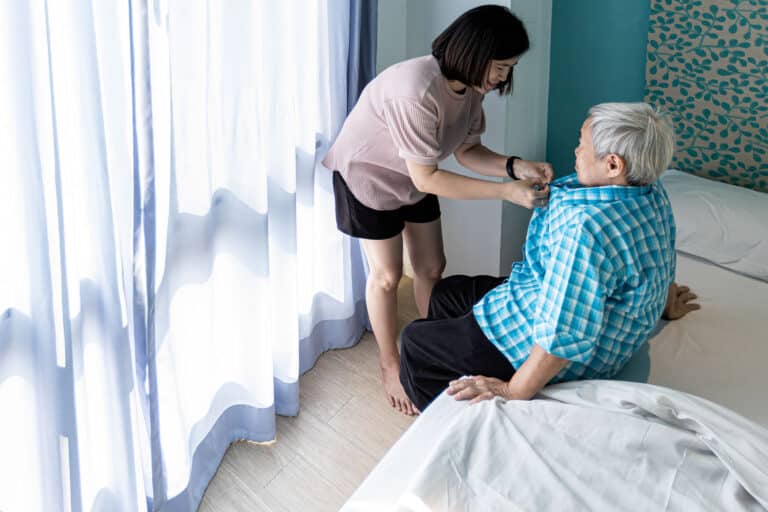Are your mornings with your loved one having a rough start because helping her get dressed is stressful? As Alzheimer’s disease progresses, the person loses more and more of their ability to not only make choices and communicate them, but it can also affect their ability to follow simple directions. Those effects of the disease can make a simple chore of putting on fresh clothes to face the day a painful process. Luckily, there are steps you can take to ease the process and in-home Alzheimer’s and dementia care services.
Why Getting Dressed Is Difficult
Your loved one might struggle to get dressed each day because she’s unsure what day it is or what season it is. This confusion that comes with the disease can make what seems like a simple act of choosing what to wear more difficult. She might also struggle to understand the need to change since she feels comfortable in her sleepwear.
Finally, if she feels stress from you or her Alzheimer’s and dementia care provider, it might affect how she reacts to your requests.
Six Tips to Make Getting Dressed Each Morning Easier
1. Give her choices.
While you may not want to present the entire closet for her to choose from, having the option to pick between two of her favorite shirts or even a fun pair of socks can make getting dressed more enjoyable for your loved one. Presenting her with choices also reduces the risk that she’ll go into her closet and pick something inappropriate that you’ll need to say “No” to causing frustration on her part.
2. Purchase clothes that are easy to take on and off.
Clothes that are loose and can slip on will be easiest for your loved one to either put on herself or have you or her Alzheimer’s and dementia care provider help with. Lots of buttons, zippers, strings, and other clothing fasteners can be too complicated at this stage.
3. Consider fit
While looser clothes are comfortable, if your loved one has lost a lot of weight due to the disease, some items might have become so loose they are no longer comfortable or even could lead to an injury. Pants that now drag on the ground should be removed from her closet, and even a bra that used to fit but is now too loose should be replaced with one that fits well and is comfortable.
4. Have her sit while she gets dressed.
If standing presents balance issues or makes instructions harder for you to guide her through, consider having her sit on a chair while she puts on a shirt and her pants. This can help both of you as she dresses.
5. Let her do as much as she can.
You may need to give prompts such as putting on her socks before her pants or reminding her to put one leg in at a time, but the more that she can do on her own, the better she’ll feel about the process. Allow plenty of time for dressing so that you don’t feel rushed or anxious if it takes longer than you anticipated.
6. Consider getting advice from an Alzheimer’s and dementia care professional.
Your Alzheimer’s and dementia care provider can help you look at your environment and will know your loved one well enough to offer advice on helpful tips for dressing.
If you or an aging loved one are considering Alzheimer’s and Dementia Care in Arvada, CO, please contact the caring staff at Talem Home Care & Placement Services today. Call (720) 789-8529
At Talem Home Care of Broomfield, we provide passionate, understanding, and flexible caregivers in Broomfield, Arvada, Aurora, Boulder, Brighton, Commerce City, Denver, Erie, Firestone, Lafayette, Lakewood, Longmont, Louisville, Northglenn, Sherrelwood, Thornton, Welby, Westminster, Wheat Ridge and surrounding areas in Colorado.
- Five Signs Your Loved One May Need Some Help at Home - April 23, 2025
- How Does Home Care Assistance Help Seniors? - April 7, 2025
- What Is the Aid and Attendance Benefit and How Does it Affect Veterans Care? - March 24, 2025







